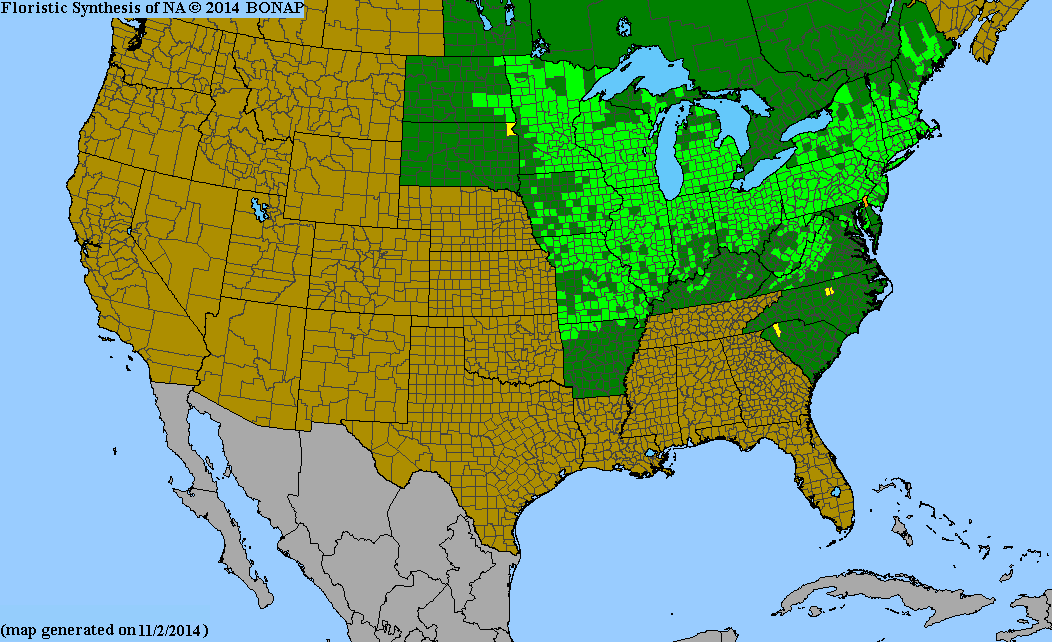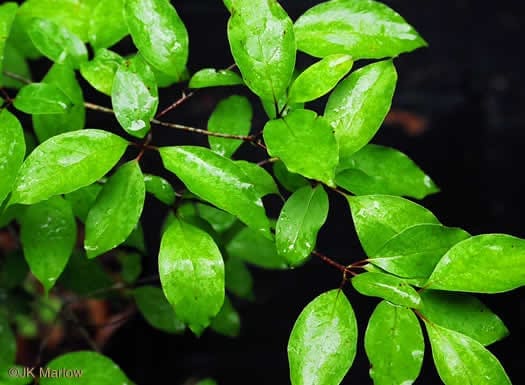Cornaceae
gray-stemmed dogwood
Swida racemosa
Synonyms
Cornus racemosa
Cornus foemina ssp. racemosa
Other Common Names
gray dogwood, panicled dogwood
Plant Type
Small Tree/Large Shrub (10-25 ft)
Life Cycle
Perennial
Typical Size
10-15 ft. tall
10-15 ft. wide
Tolerant of
Drought, Occasional Flooding
Propagation
By seed, By cutting, By division, By air-layering
Plant Planting Notes
Provide a minimum of 10 feet to accommodate rhizomatous spread.
Plants/Diseases
No significant diseases or pests. Dogwood bug gall occurs occasionally.
Wildlife Benefits
Nectar/pollen source for pollinating insects, Host plant for butterfly larvae, Fruit/seeds for birds
Leaves
Leaves opposite, blades lanceolate to ovate with secondary veins.
Flowers
Small creamy-white flowers clustered on dome-shaped panicles.
Fruit
The white drupes form in the late summer to early fall.
Bark
Older bark is dark gray to dark brown with prominent lenticels. Newer twigs are red.
Toxicity
No known toxicity.

USDA Hardiness Zones
4, 5, 6, 7, 8
Light Exposure
Full Sun, Part Sun/Shade, Full Shade
Soil Moisture
Dry, Medium, Moist
Soil Drainage
Well-drained
Soil pH
Acidic (less than 6.0), Neutral (6.0-8.0), Basic (greater than 8.0)
Native in South Carolina?
No
Closest States Where Native
North Carolina
Plant Native Habitat
Wet to moist forests, thickets, and swamp margins.
Global Conservation Status (NatureServe)
Secure (G5)
Federal Conservation Status (USFWS)
Not Listed
Distribution Notes
Rare in the North Carolina Piedmont.

